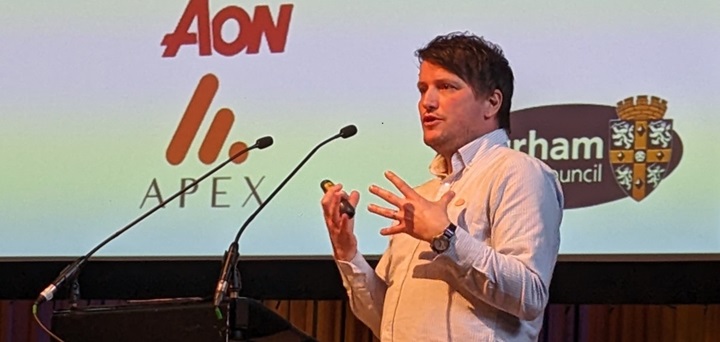Paul Cooper, head of Pensions at Durham County Council reflects on his experience of pooling, nearly a decade into the launch of the reforms.
 In 2015, the LGPS was tasked with what seemed a mammoth undertaking – pooling the assets of its 86 individual funds. Government sought to spur investment into private markets, maximise the benefits of scale, and to reduce LGPS investment costs thereby improving the Scheme’s VfM The ‘What’ and the ‘Why’ was clear, and well understood.
In 2015, the LGPS was tasked with what seemed a mammoth undertaking – pooling the assets of its 86 individual funds. Government sought to spur investment into private markets, maximise the benefits of scale, and to reduce LGPS investment costs thereby improving the Scheme’s VfM The ‘What’ and the ‘Why’ was clear, and well understood.
‘How’ this should all be implemented however, was less well defined – with LGPS funds and their administering authorities invited to lead the design and implementation of their own pools.
Political spotlight
Nearly a decade on, eight LGPS pools have been established across England and Wales, rather inevitably operating eight different models and sizes. Following the publication of the long-awaited government consultation and last week’s general election, the political spotlight is firmly back on the LGPS and on asset pooling.
The question over the future shape of the LGPS remains a significant one. Whilst consolidation, and the prudence of 86 funds, has been the focus of recent debate – there remains much that the LGPS can achieve through completion of its pooling journey. For much of the LGPS, the full benefits of pooling are yet to be realised and completing this journey presents a greater opportunity than any structural reform of the scheme at this stage.
Given the divergent approaches taken to date the question of what model of pooling the LGPS should adopt, remains – indeed, what ‘good’ looks like is once again up for debate. Until recently, the only test of the divergent approaches was respective funds’ satisfaction that pooling was delivering for them; whilst policy direction focused on periodic implorations to pool further and faster and a repeatedly delayed consultation on next steps.
Over the last 12 months that context has been transformed and the policy direction has been filled to a significant degree; with the Labour manifesto starting to flesh out its plans for financial services and pension investment.
It would appear that key drivers for pooling in the coming years will be maximising the pooling of assets and the value for the LGPS from those centres of expertise that have been created; fostering greater collaboration across pools as well as a drive for greater investment in the UK, particularly through private markets, will be key cornerstones of the agenda to come.
It now falls to the eight pools and their funds to consider how they meet these challenges, including the Border to Coast pool in which Durham is a proud partner.
In-house investment
A distinguishing feature of the model we adopted, which we believe is critical to meeting these challenges, is a fully-fledged internal investment team allied to a collaborative, ‘one fund, one vote’ approach to decision making – regardless of respective AUM.
We have found that having an expert investment team that can blend direct management with best-in-class specialist external partners offers the best of all worlds for our partnership. Today, Border to Coast can safely be labelled a hub of investment expertise, one that we see as an important extension of our own team.
Whilst in Durham, we have typically chosen external management for our active equity mandates with manager selection expertly undertaken by Border to Coast’s internal team; we have also utilised internally managed funds where this best fits with our own investment strategy. In particular, Border to Coast’s experienced private markets team have added significant value to our portfolio and approach. Border to Coast’s blend of internal capabilities and external partnerships provide the resource, scale and optionality needed to enable us to successfully implement our long-term investment strategies.
To date, Border to Coast has developed a suite of directly managed equity and fixed income funds, appointed external managers with Border to Coast oversight, a £16bn private markets programme, and nascent real estate propositions. Each and every one of these propositions is developed with the guidance and involvement of the underlying partner funds. As a partnership, enshrined within both our guiding principles and formal Shareholder Agreement is the concept of ‘one fund one vote’ – the heterogeneity of views of 11 sovereign funds in the development process has been a significant contributor to our pooling progress.
So far, so impressive. And the academic research confirms what we know from experience, that a model based on internal investment capabilities offers the best potential to reap the significant benefits of scale and deliver long-term value. On a like for like investment basis, we have made significant savings. Yet, the benefits of the internal model go beyond driving value in fees and cutting costs.
A focus on strong governance, the right culture, and close alignment of underlying owners has all been shown to add real value. And that is without mentioning an internal manager’s ability to develop a responsible investment strategy to make a real difference; informed by its direct engagement with companies on sustainability and ESG.
This direct management capability therefore is the foundation of the Border to Coast centre of expertise our partnership has built which we believe, in turn, positions the business well to support partner funds to meet the emergent challenges for the LGPS and from the potential from further pooling.
‘Punch its weight’
In addition to simply meeting requirements set out for the LGPS by Government however, there is the potential to do something more profound. For too long, the (perhaps unfair) criticism of the LGPS has been its failure to ‘punch its weight’ given the c.£400bn of assets we collectively steward. The Border to Coast model of pooling has the potential to comprehensively debunk that narrative, correctly positioning the LGPS as an investor at significant scale, offering investment expertise, driving innovation, demonstrating excellence in active stewardship and doing so while supporting the sustainable payment of pensions whilst retaining local accountability in the communities we serve.
To that end, I am particularly proud of Border to Coast’s recently launched £0.5bn UK Opportunities Fund. As my Border to Coast colleague Mark Lyon recently highlighted, this multi-asset UK-wide Fund is focused on additionality, new productive capital, and the funding of new companies. Prioritising investment returns whilst seeking to achieve a tangible impact across the UK regions, I believe that UK Opportunities demonstrates both the ambition and scale which the UK Government desires from the LGPS. Where appropriate, we will continue to make small local investment allocations which complement the scale we can achieve through UK Opportunities; having collaborated recently with our regional pooling partners on the launch of a £98m SME fund which will support economic growth and deliver a positive social and economic impact across the North East region; creating high-quality, local jobs. The power of LGPS partnership.
Whilst UK Opportunities was a strategic imperative for many of the partnership’s underlying funds, our collective ambitions are not constrained by location. Border to Coast’s innovative Climate Opportunities Fund has a global outlook and provides LGPS funds access to investment in projects and businesses at home and abroad that are expected to make a material contribution to decarbonising economies. Partnership commitments to date total £3.6bn. A significant contribution from local funds to global change; delivered by our internal Border to Coast investment team.
So, back to the killer question at hand, what does ‘good’ look like for LGPS pooling?
It has been, and will remain, such a big question because the numbers are huge. The c.£400bn LGPS assets is an incredible amount of money that requires serious and considered management. It is, after all, the retirement fund for millions of people from bin men to teaching assistants, social workers to town planners who all rely on us in the LGPS for an income in retirement. The need to maximise risk adjusted returns ever more important to the many hundreds of participating employers of all types within the Scheme, for whom affordability of contributions has never been more important given the budgetary pressures facing the sector.
The answer is that the model and partnership demonstrated at Border to Coast is a case study in what ‘good’ pooling can look like – maybe even, whisper it, what it looks like to exceed expectations.
—————
FREE bi-weekly newsletters
Subscribe to Room151 Newsletters
Follow us on LinkedIn
Follow us here
Monthly Online Treasury Briefing
Sign up here with a .gov.uk email address
Room151 Webinars
Visit the Room151 channel













